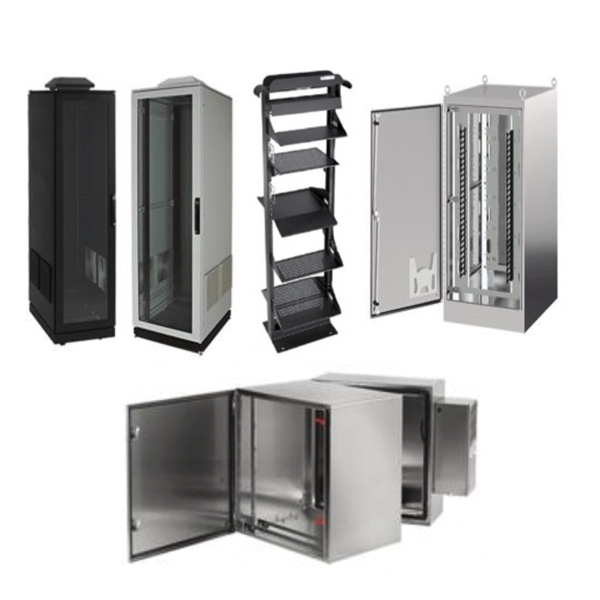Network Racks & Cabinets

RSP Supply provides a reliable selection of network racks and cabinets designed to organize, protect, and support IT and industrial networking equipment. Open-frame network rack options allow for maximum airflow and quick access to switches, patch panels, and servers, making them well-suited for secure server rooms and telecom spaces. Enclosed cabinets add physical security and environmental protection for sensitive electronics in more demanding environments.
Our lineup includes wall-mount and floor-standing enclosures with front and rear access panels to simplify installation and maintenance. Many industrial network cabinet models are built to handle harsher conditions, offering durable steel construction, controlled airflow, and compatibility with cooling and cable management accessories. Available options support a clean, organized layout while helping maintain optimal operating conditions.
Designed to meet industry-standard rack specifications, these network racks and cabinets support a wide range of equipment sizes and depths. Whether used in data centers, control rooms, or industrial facilities, these enclosures help ensure dependable performance, efficient airflow, and professional organization across network installations.
FAQs
Q: What are network cabinets and racks used for?
Network cabinets and racks are used to securely house and organize IT and networking equipment such as servers, switches, patch panels, routers, and power distribution units. They help protect equipment, manage cables, and support proper airflow.
Q: What types of network racks and cabinets are available?
Common options include wall-mount cabinets, floor-standing server cabinets, open-frame racks, portable rack cases, and LAN racks designed to meet different space, load, and accessibility requirements.
Q: When should an industrial network cabinet be used instead of an open rack?
An industrial network cabinet is recommended when equipment requires added physical protection, environmental shielding, or controlled airflow, such as in manufacturing facilities or utility areas.
Q: What materials are network racks and cabinets typically made from?
Most network racks and cabinets are constructed from steel for strength and durability, with many enclosed cabinets featuring tempered-glass or perforated doors to balance visibility, security, and ventilation.
Q: Are network cabinets compatible with standard rack-mounted equipment?
Yes, most network racks and cabinets follow standard 19-inch rack specifications and are compatible with common servers, switches, patch panels, and accessories from multiple manufacturers.
Why Buy Network Racks & Cabinets from RSP Supply
RSP Supply offers a broad selection of network racks and industrial network cabinets designed for dependable performance in IT and industrial environments. Customers rely on RSP Supply for knowledgeable support, consistent product availability, and enclosure solutions that help protect equipment, improve organization, and support long-term network reliability.

